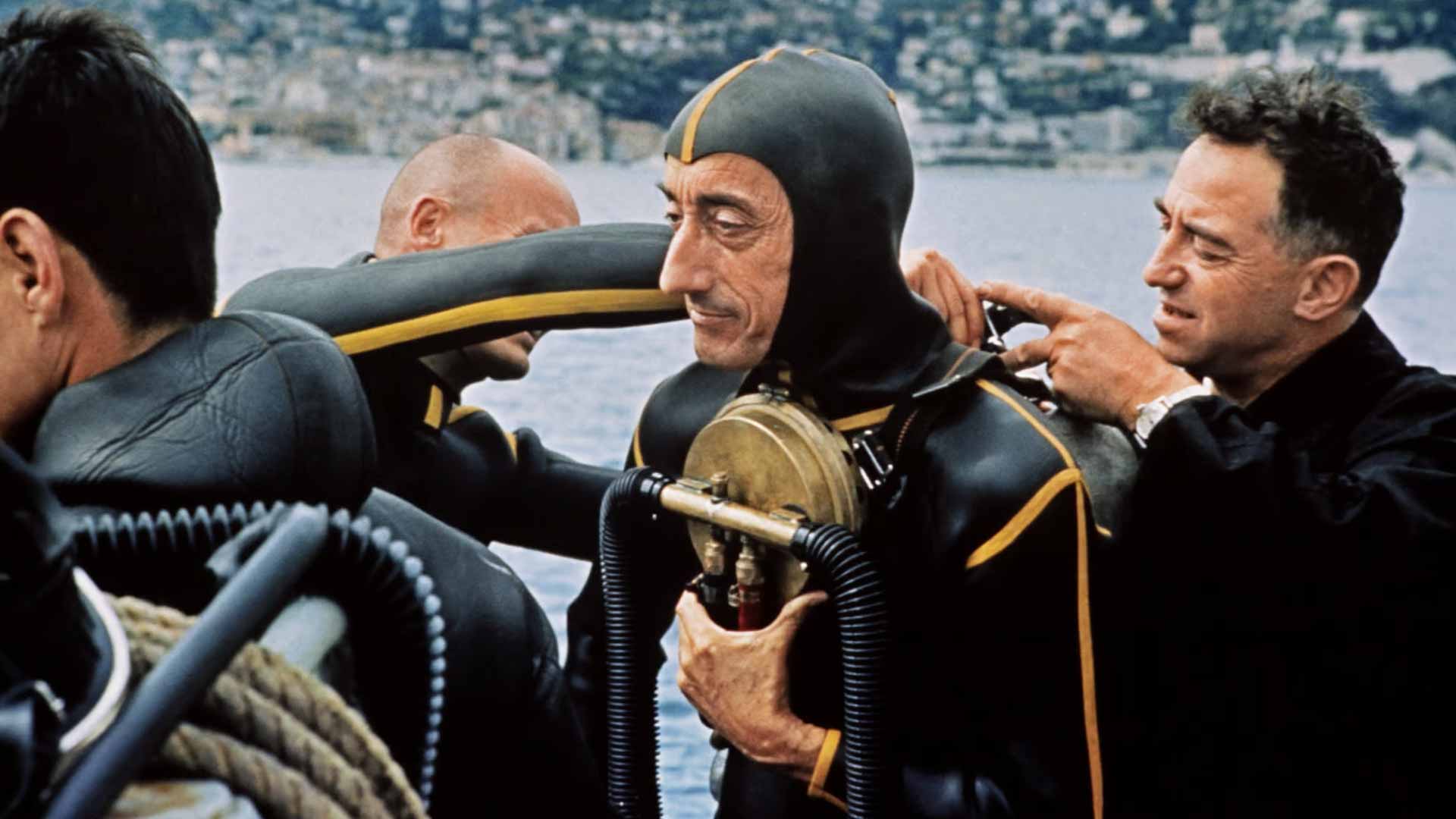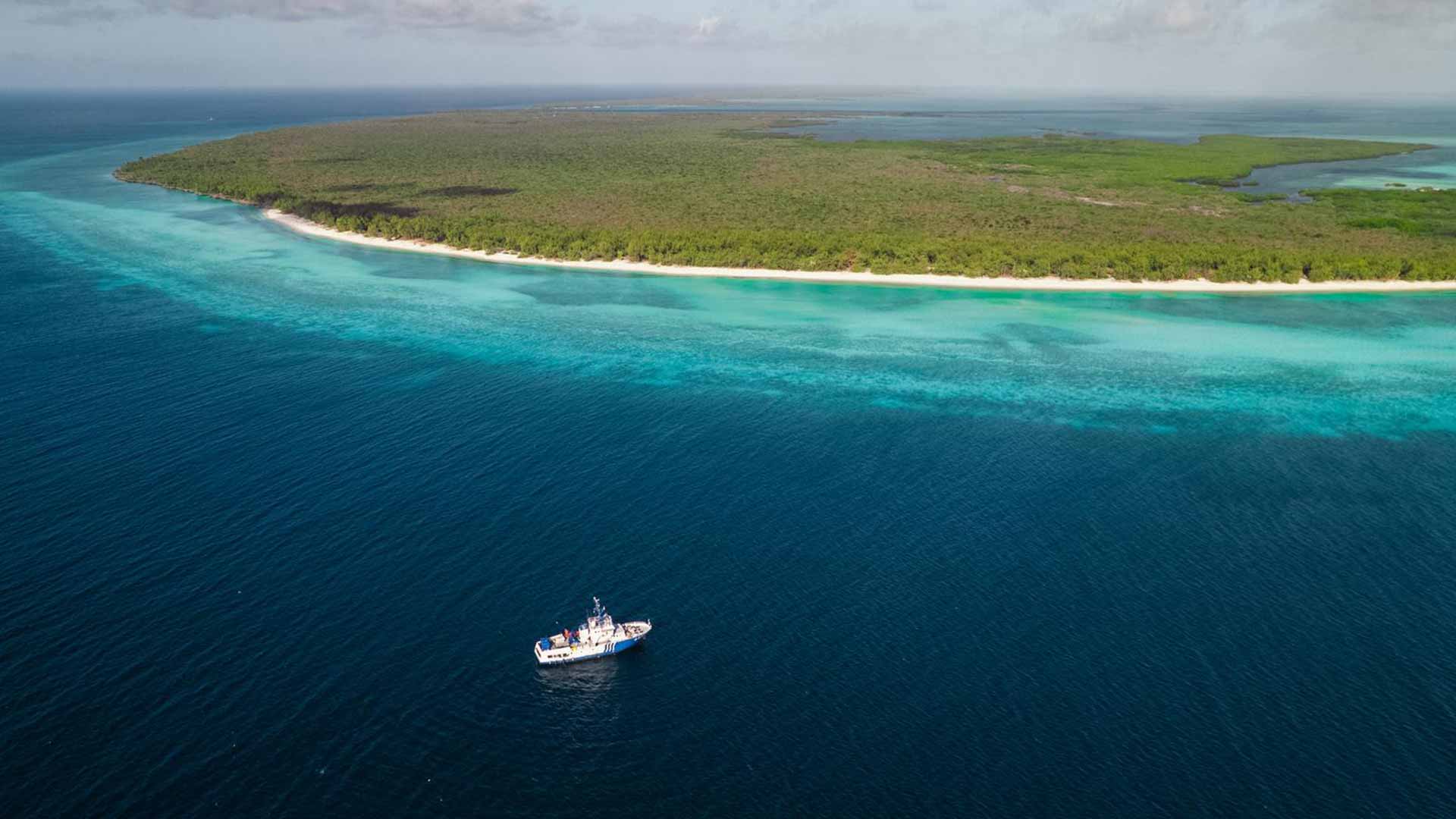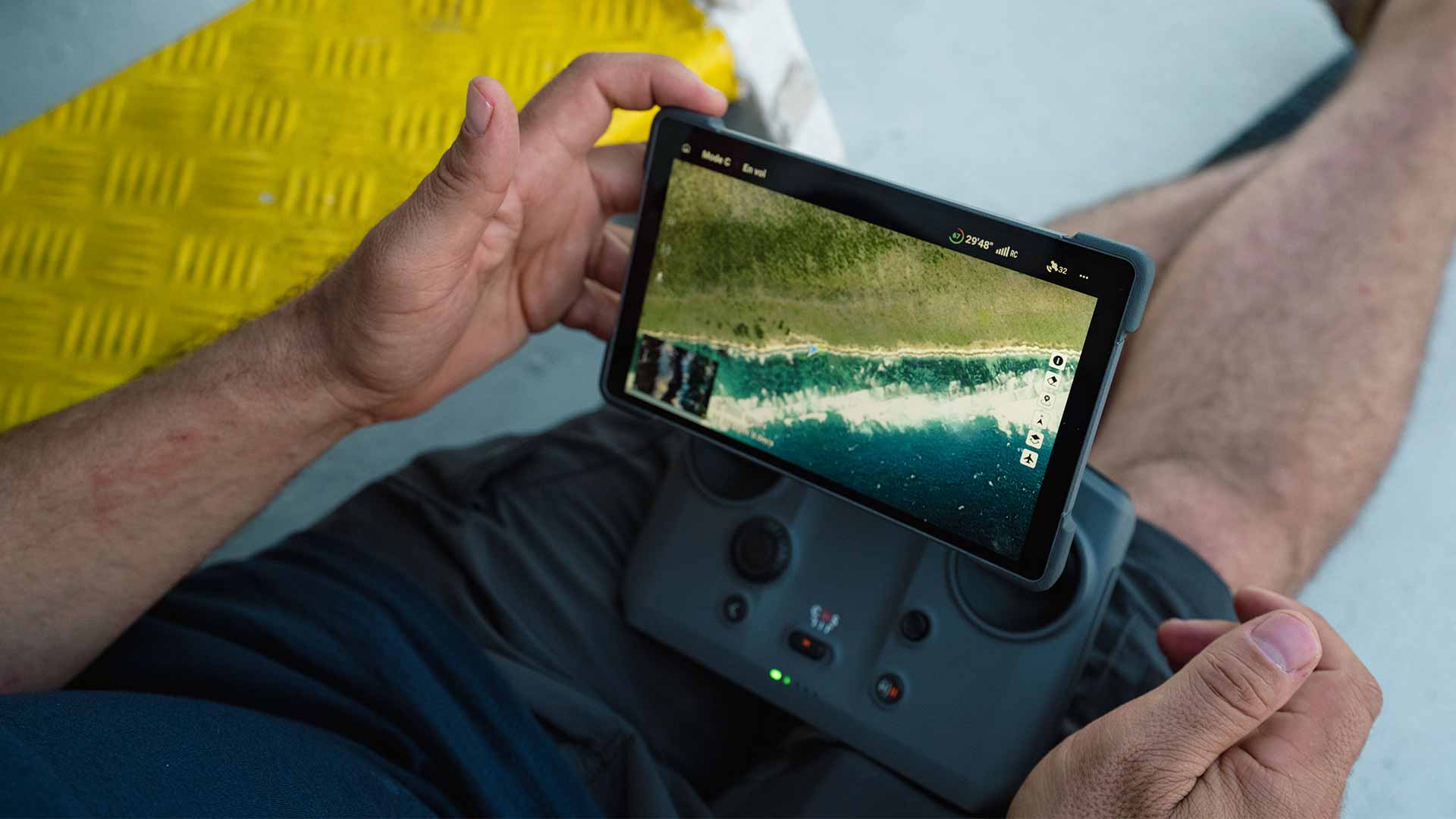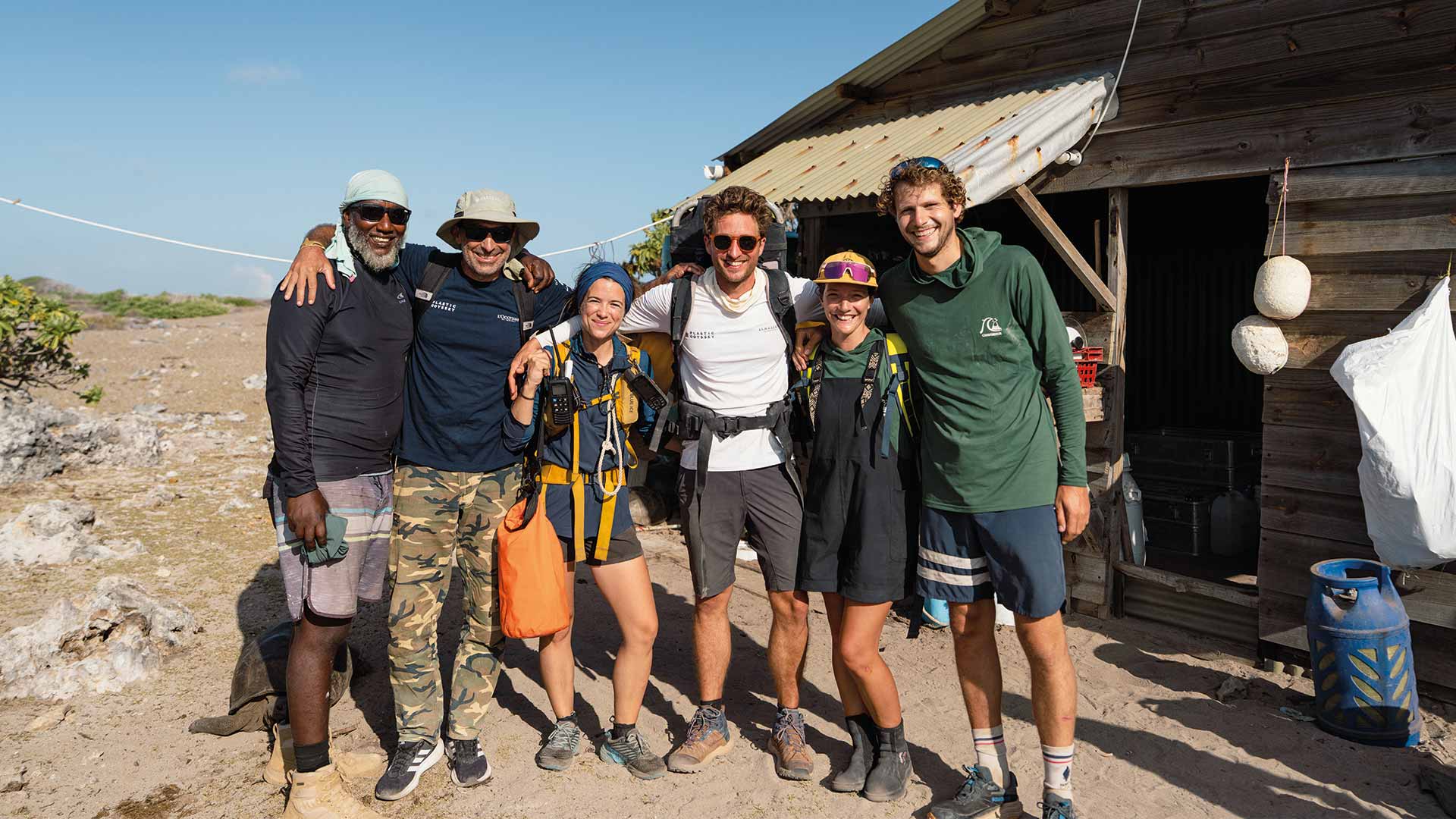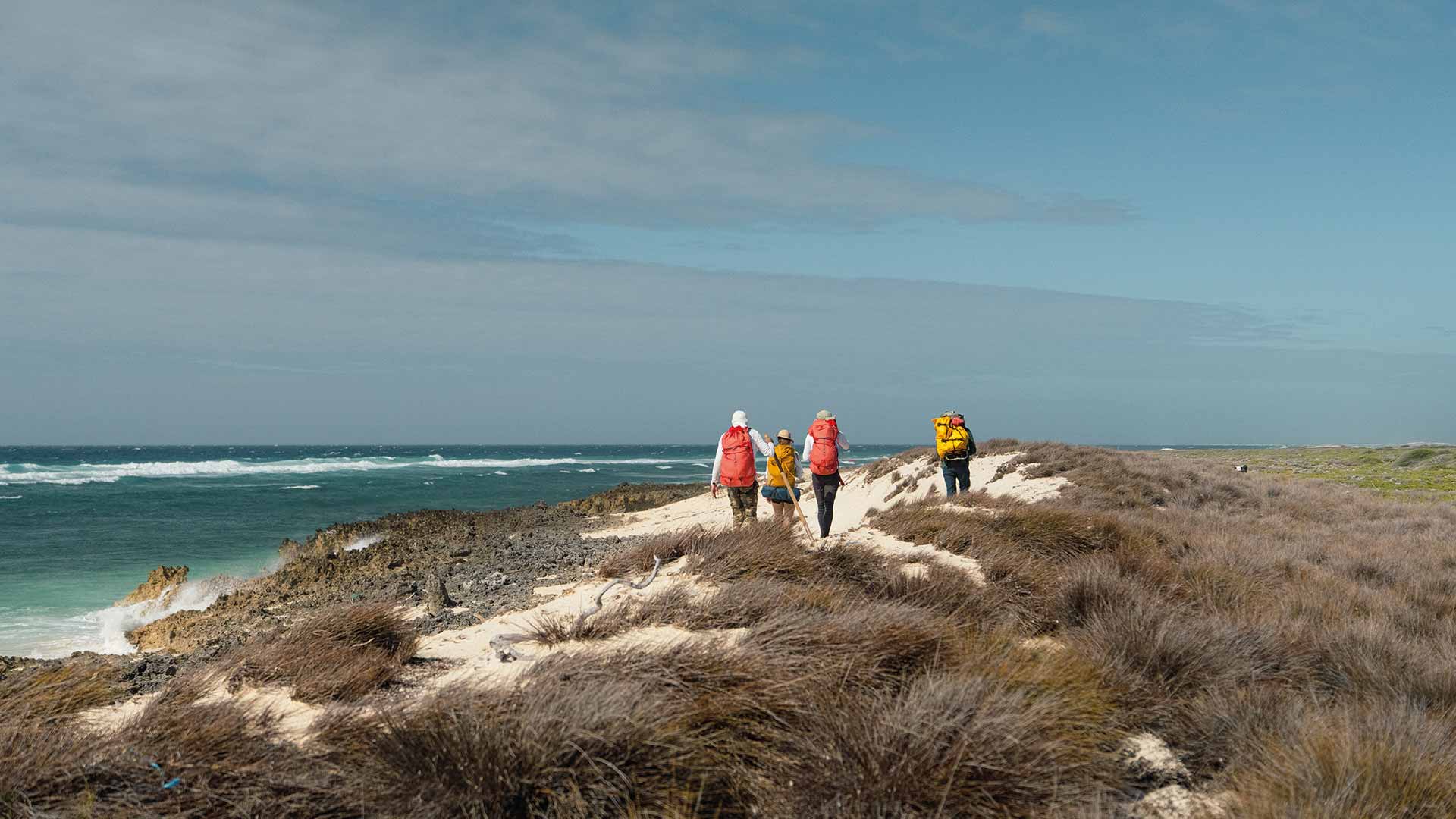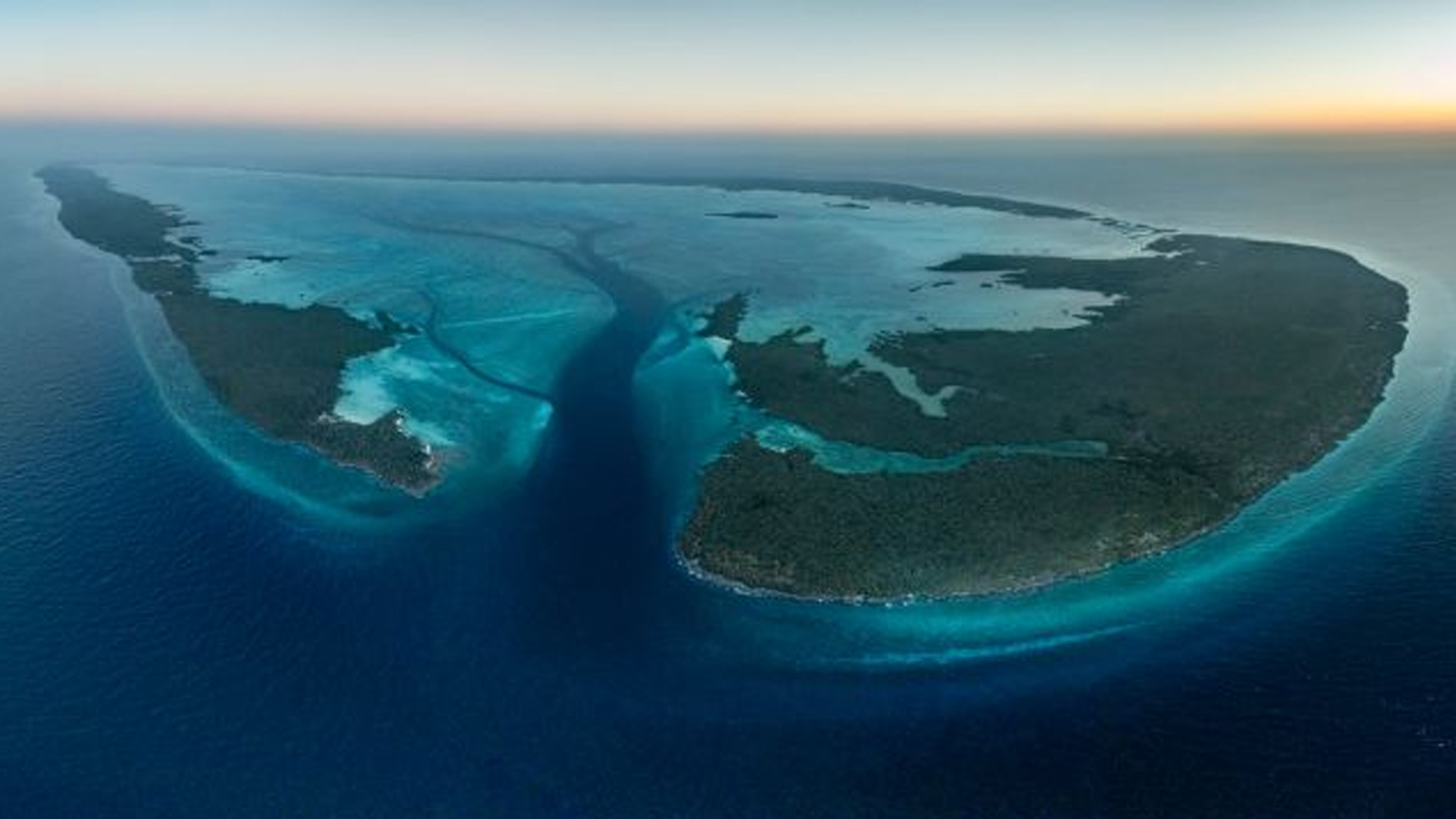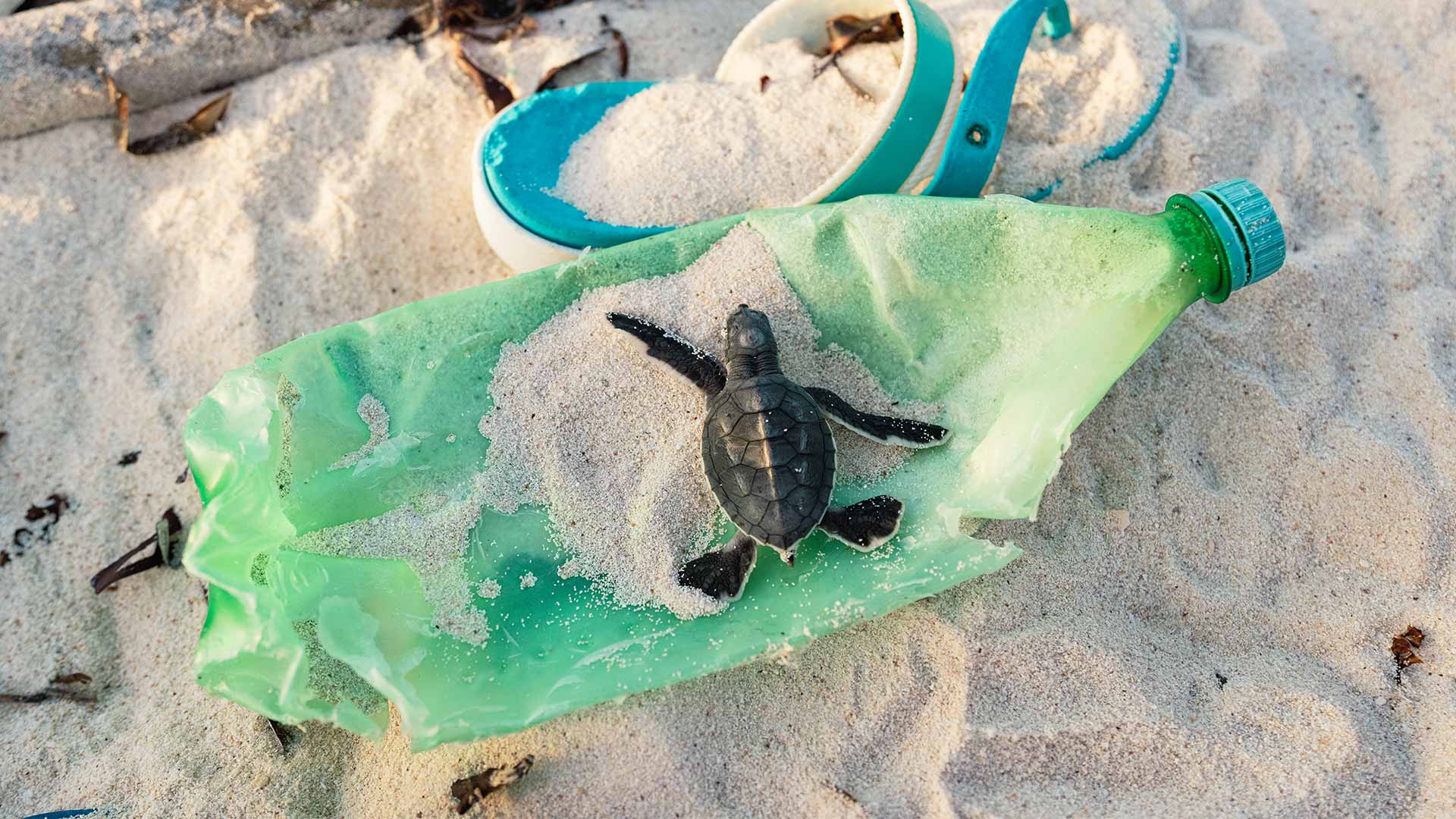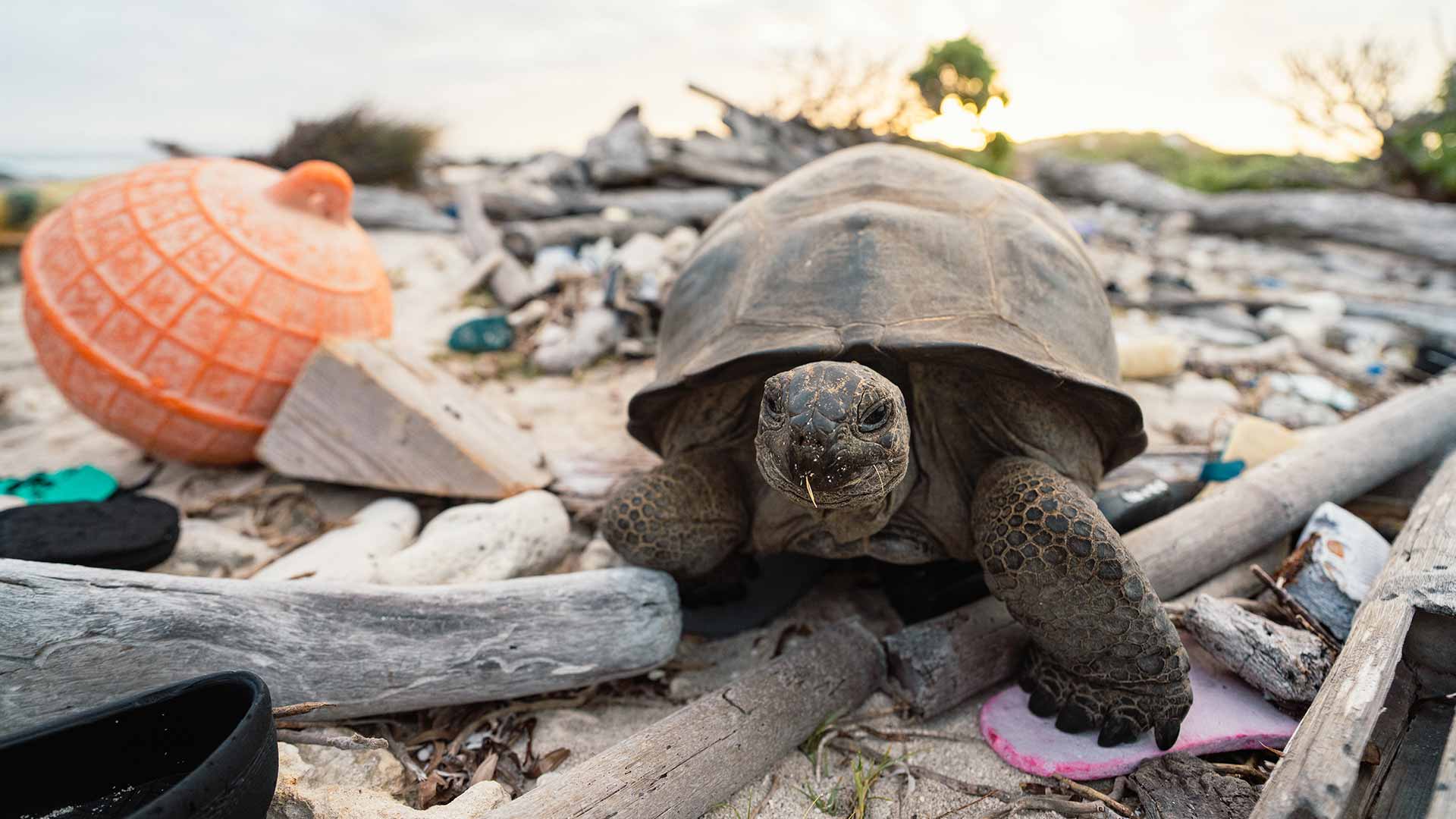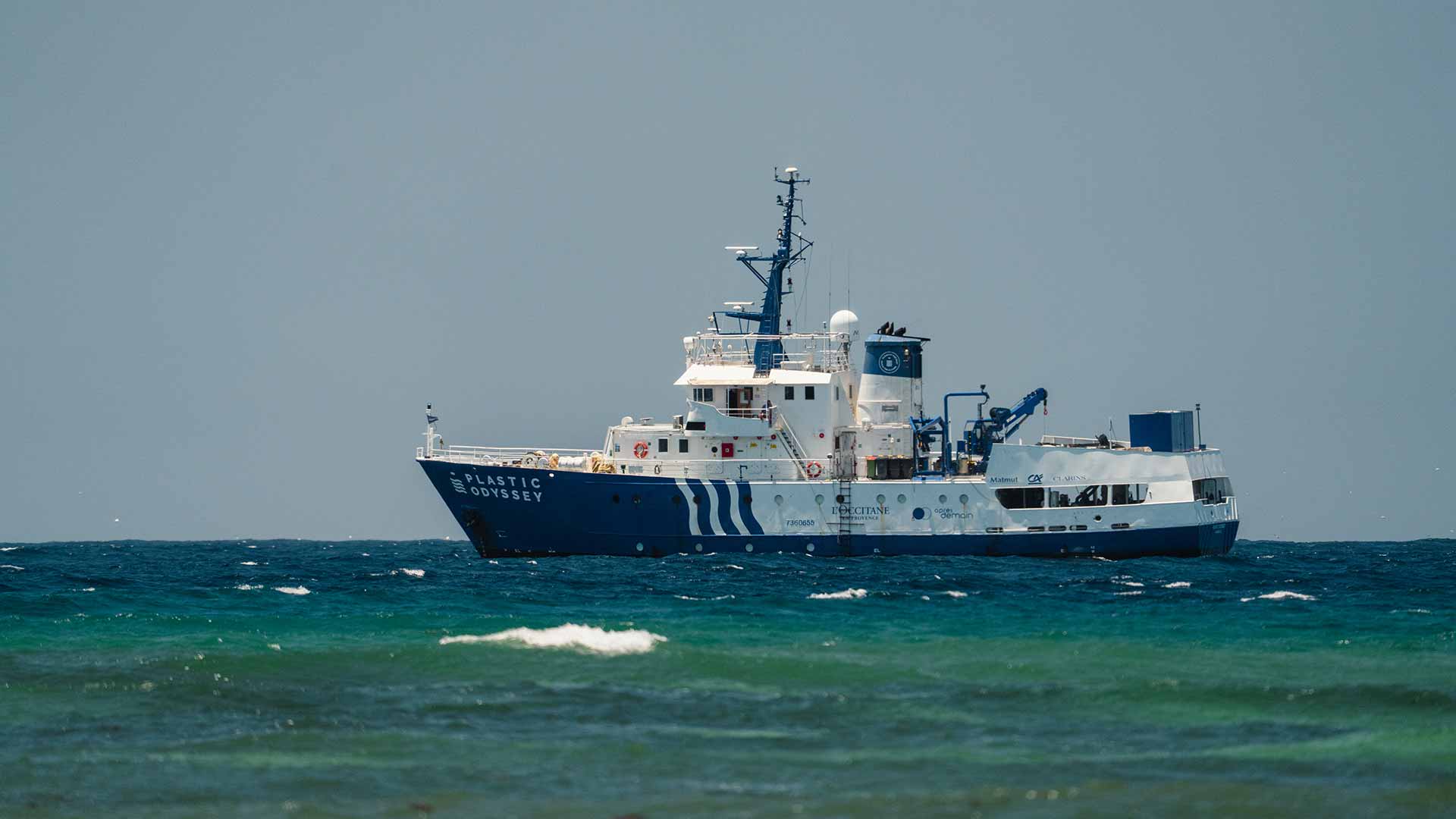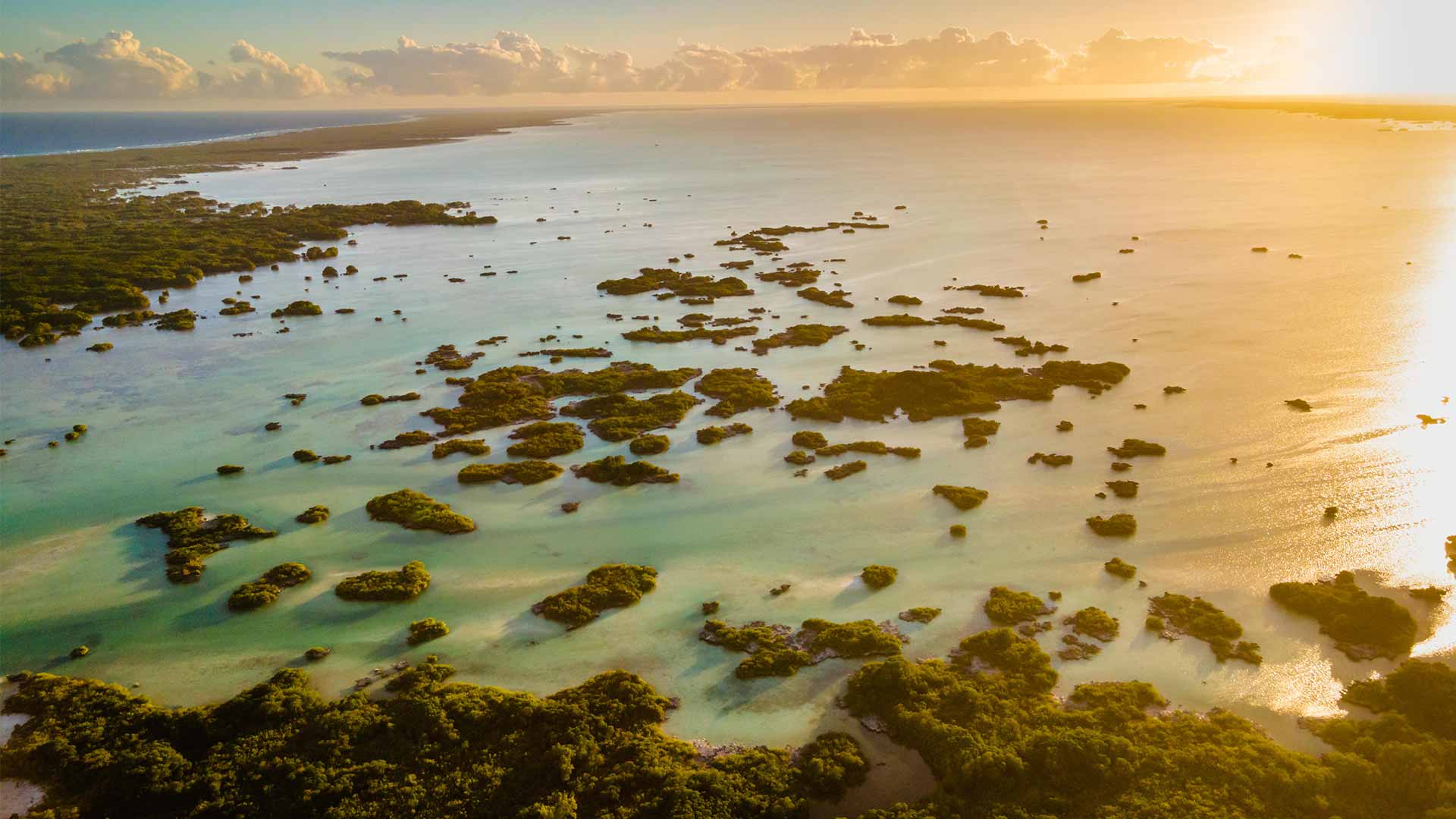
After spending a few hours at anchor off the Seychelles capital, the vessel set sail in the early afternoon. “Aldabra, here we go!” cheered Pierre-Louis, known to all as “Pilou”, the second officer, as he sounded the ship’s horn. Under a cloudless sky, Plastic Odyssey first headed north along the coast of Mahé. Slowly, the island faded into the distance.
As Plastic Odyssey cast off its lines from the port of Victoria this morning, a sea turtle was spotted swimming to starboard at the surface. A good omen, perhaps? A sign? After spending a few hours at anchor off the Seychelles capital, the vessel set sail in the early afternoon. “Aldabra, here we go!” cheered Pierre-Louis, known to all as “Pilou”, the second officer, as he sounded the ship’s horn. Under a cloudless sky, Plastic Odyssey first headed north along the coast of Mahé. Slowly, the island faded into the distance. Around 6 p.m., at the stern, Germain, head of the onboard workshop, reeled in a shimmering dolphinfish. The sun was already sinking westward, and the hills of the Seychelles disappeared beyond the horizon.
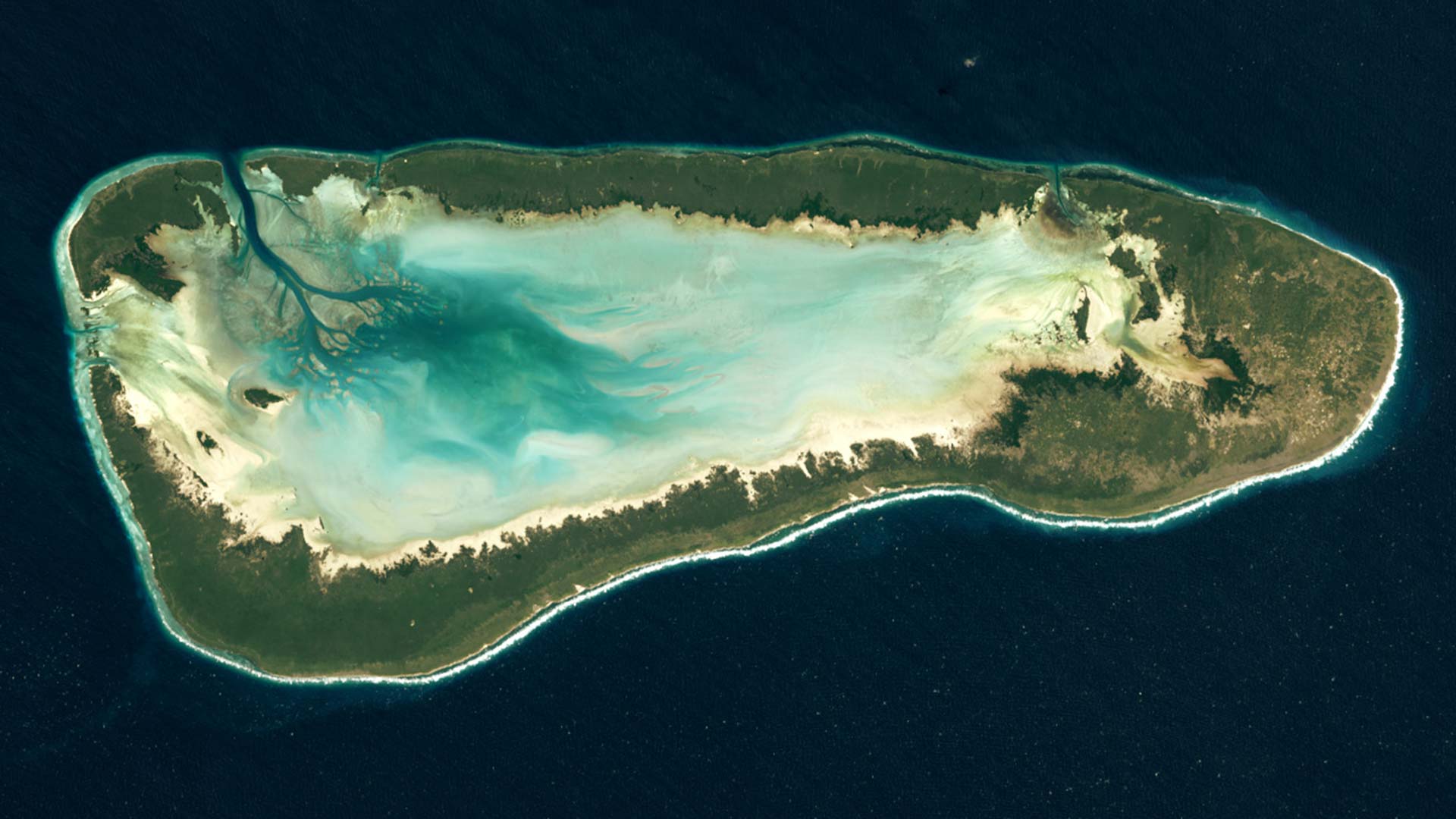
Aldabra. The very name stirs the imagination. It is an invitation to travel, to adventure. It could just as easily be a character, a mysterious magician from an Arabian Nights tale. The atoll, made up of four islands (Malabar, Grande Terre, Polymnie, and Picard), shares the same linguistic roots as “Aladdin.” Named by sailors, the word derives from “khadraa”, meaning “the green” in Arabic. Was it chosen for the emerald color of its immense lagoon? Not quite, rather for the green halo said to appear in the sky when one approaches by sea, a vision the Plastic Odyssey crew hopes to witness in four or five days.
Aldabra lies 375 nautical miles (700 km) from Tanzania and 220 miles (407 km) from Madagascar, closer to the “Great Island” than to Mahé. Yet it belongs to the Seychelles archipelago, independent from Great Britain since 1976. Today, access to the atoll is strictly regulated by the Seychelles Islands Foundation (SIF), a governmental body that grants the precious “clearances” to visit it only sparingly. Having departed from Lamu, in northern Kenya, on Friday, September 26, Plastic Odyssey stopped in Victoria to take on a team of divers and to obtain that much-coveted authorization to anchor near Aldabra, which spans an area about one and a half times the size of Paris.
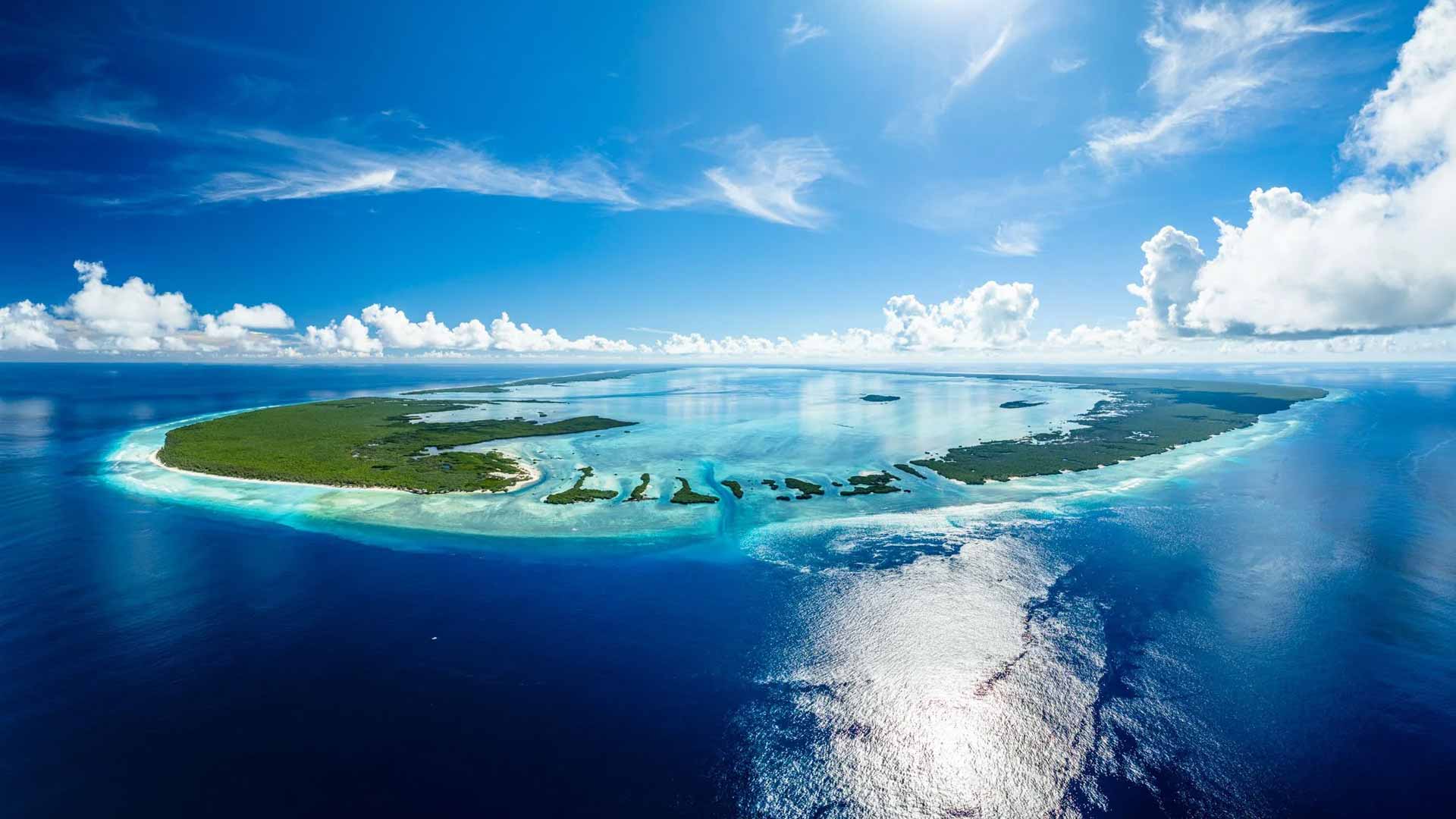
The first Europeans to discover Aldabra were the Portuguese, who charted it for the first time in 1517. It later became French, then British. A true biodiversity paradise, its sands have been walked by some of history’s most famous scientists. Charles Darwin, aboard The Beagle, landed there in the 19th century and was among the first to draw attention to its unique character. A century later, in the 1950s, Jacques-Yves Cousteau fell in love with Aldabra and filmed several scenes of his legendary movie The Silent World there. At the time, the atoll was already threatened by projects such as fish smokehouses, mangrove timber exploitation, and industrial fishing, all endangering what is now considered the last sanctuary of giant tortoises.
In 1982, Aldabra was inscribed on the UNESCO World Heritage List. “Aldabra is an exceptional natural laboratory for scientific research and discovery,” states the United Nations agency, with which Plastic Odyssey signed a partnership in June 2025. “The atoll is a refuge for more than 400 endemic species and subspecies: vertebrates, invertebrates, and plants. It is home to the world’s largest population of giant tortoises (Geochelone gigantea), with over 100,000 individuals, the last survivors of a form of life once widespread across the Indian Ocean islands. Aldabra is now their only remaining habitat. Its ecosystem also supports endangered species such as the green and hawksbill turtles. The atoll provides vital nesting grounds for birds, including two endemic species, the Aldabra fody and the Aldabra drongo, along with eleven other endemic subspecies.” But this paradise is under threat. A 2020 scientific study led by researchers including April Burt (University of Oxford) and Jeremy Raguain (SIF) revealed that the atoll is polluted by 513 tons of plastic waste.
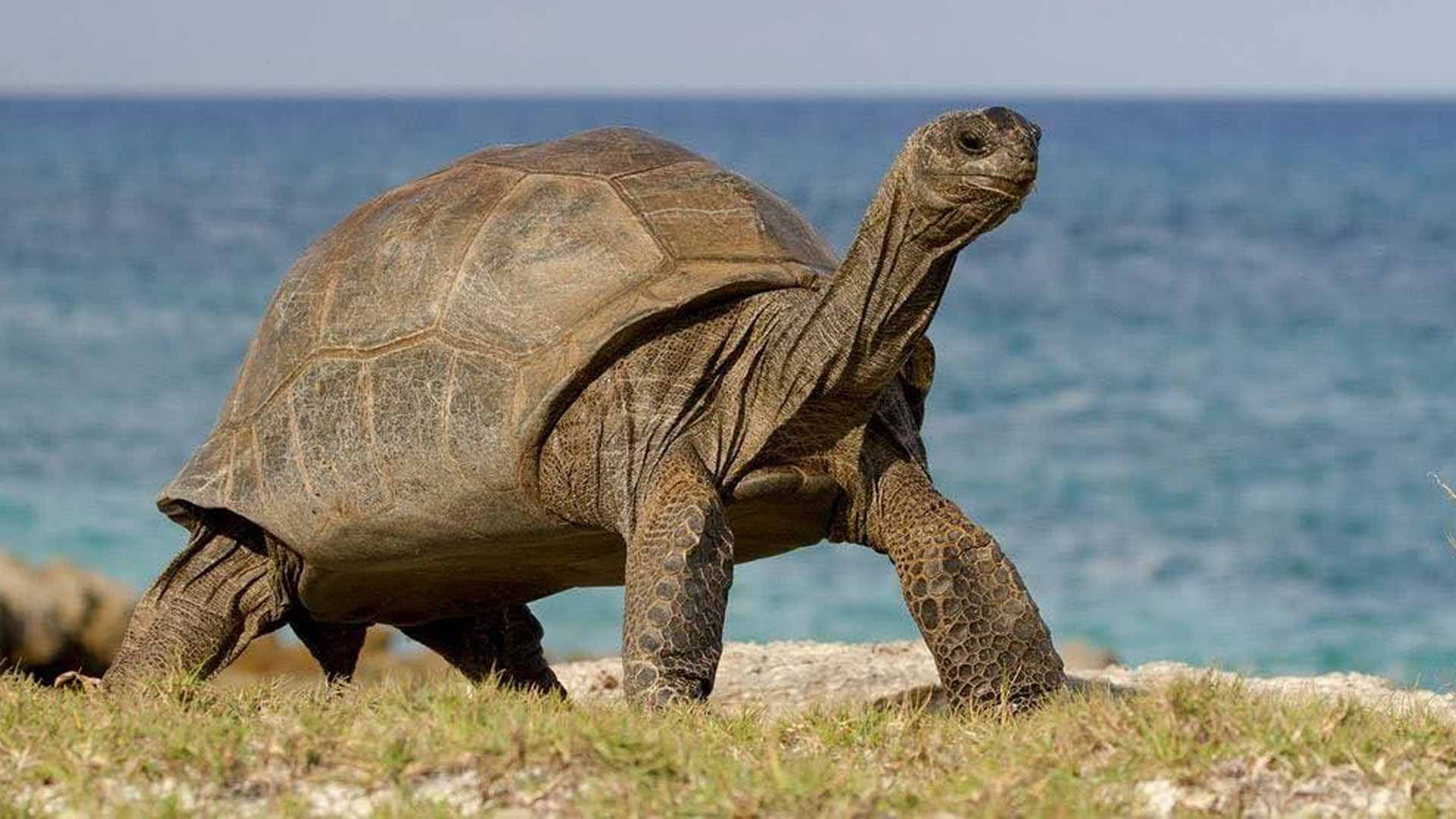
“After extracting nine tons of waste from Henderson Island in the South Pacific last April, we’re aiming much higher this time,” explained Morgane, Plastic Odyssey’s stopover coordinator, during a briefing held in the port of Victoria on Friday, October 3. The expedition, expected to last about ten days on Aldabra, will not aim to clean the atoll’s shores just yet. “The amount of waste is so massive that we must first carry out a reconnaissance mission,” said Simon Bernard, expedition leader and co-founder of Plastic Odyssey. “Our goal is to assess the feasibility of a large-scale cleanup. That means measuring the volume of waste, mapping the most affected areas, and analyzing which methods could be used to remove it.”
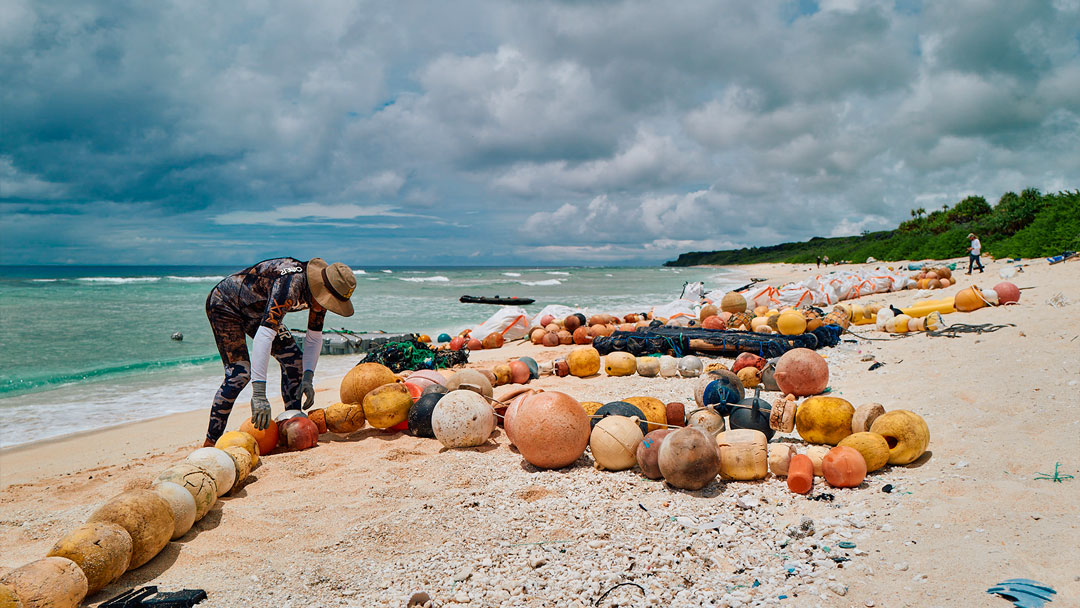
Two teams of five people each will take turns on the atoll, mainly on Grande Terre, Aldabra’s southernmost island. Driven by the currents and the southeast trade winds, this is where plastic pollution has been accumulating for decades.
It is 9 p.m. now. In the crew quarters of Plastic Odyssey, silence has settled. On the bridge, Captain Yoann stands watch with Megan, the deckhand. The cabin is dark. They listen to the soft, hypnotic rhythms of Tissilawen, a Tuareg band. The music sways gently, in time with the movements of the vessel.
Author: Pierre Lepidi, Senior Reporter at Le Monde
Other articles
Day 1: “Aldabra, here we go!”
After spending a few hours at anchor off the Seychelles capital, the vessel set sail in the early afternoon. "Aldabra, here we go!" cheered Pierre-Louis, known to all as "Pilou", the second officer, as he sounded the ship’s horn. Under a cloudless sky, Plastic Odyssey first headed north along the coast of Mahé. Slowly, the island faded into the distance....
Day 2: “Aldabra is a paradise bristling against the invasion of man”
Aldabra has always inspired awe among those lucky enough to reach it. Yet its greatest defender was Commander Jacques-Yves Cousteau (1910–1997). Beyond revealing Aldabra’s coral beauty to the world, he made it his mission to protect it from the various forms of harm caused by humankind....
Day 3: Final preparations before landing on Aldabra
The vessel now moved to the rhythm of landing preparations, and nothing was left to chance. To protect biodiversity, the Seychelles Islands Foundation (SIF), the body responsible for regulating the atoll and issuing permits, requires that all equipment taken ashore on Picard Island be thoroughly cleaned of dust, sand, seeds, and soil....
Day 4: Aldabra, seen from the sky
One of Plastic Odyssey’s missions is to map the areas where 513 tons of plastic waste were recorded during a scientific expedition in 2020. Driven by the trade winds, these piles have accumulated along the southern and eastern shores of the atoll, over roughly fifty kilometers. Some of these zones, as satellite images show, are extremely difficult to reach....
Day 5: Aldabra, the challenge of water
The heat was oppressive, almost suffocating. The first challenge was to get the seawater desalination unit running to rehydrate. "Water is life. The first priority in any survival situation is always access to water," explained Thibault, engineer aboard Plastic Odyssey. Since there are no natural sources on Aldabra, the scientific team relies exclusively on filtered rainwater for their daily needs....
Day 6: East of Aldabra, a lunar landscape swept by the trade winds
After waking, the Plastic Odyssey team decided to watch the sunrise from the top of the dune beside the DJL camp. Rising about twenty meters high, it is the atoll’s highest point. From up there, nature came alive in calm and color. Aldabra stretched out in every direction. The first light of day glowed orange and gold, as if the island were trying to seduce us....
Day 7: Aldabra does not give itself away, It must be earned
To confront Aldabra is to endure the island’s harsh conditions, but every effort is rewarded. A meeting with a tortoise, a sunset, a breathtaking landscape, the island gives back to those who care for it. But it never gives itself easily. It must be earned....
Day 8: Aldabra asks to be protected
Night had fallen. A dozen tortoises surrounded us. Almost naively, I asked Francis, the island's manager, what message Aldabra might want to send to the world. "It would be a cry from the heart," he said. "I am unique. Protect me."...
Day 9: Life Among Aldabra’s Giant Tortoises
The sea turtle reaches the plastic debris: she skirts a fishing buoy, crushes a plastic bottle. Farther on, a tire, a few jerrycans, some sandals. Watching her struggle through this apocalyptic landscape feels unreal, deeply moving....
Day 10: Mission accomplished for Plastic Odyssey on Aldabra
The Plastic Odyssey is expected off Dune Jean-Louis at 10 a.m. to test the extraction of half a ton of plastic waste using a floating platform made of jerrycans. The barge will shuttle between the vessel and the shore. But the sea is rough, and the wind is strong. Will the extraction be possible? Tension and uncertainty fill the air....
